Announcing MailerSend’s new rich-text email editor

You now have three ways of creating transactional email templates in MailerSend: using the drag & drop builder, HTML email editor, or the new rich-text email editor. The question is, which one should you choose? The quick answer is to pick the email editor that best suits what you want to accomplish!
The rich-text editor is great for people who want to jump into designing an email template using the most essential styling features and content blocks. If you need something a little extra, enjoy the flexibility of adding call-to-action buttons or adding variables to personalize your emails.
Seamlessly edit templates inline
The new rich-text editor is an inline editor where all your changes are automatically made in-place. When you compose messages, each new paragraph is automatically converted to a text block. This allows you to edit and change text very easily by rearranging blocks until you’re happy.
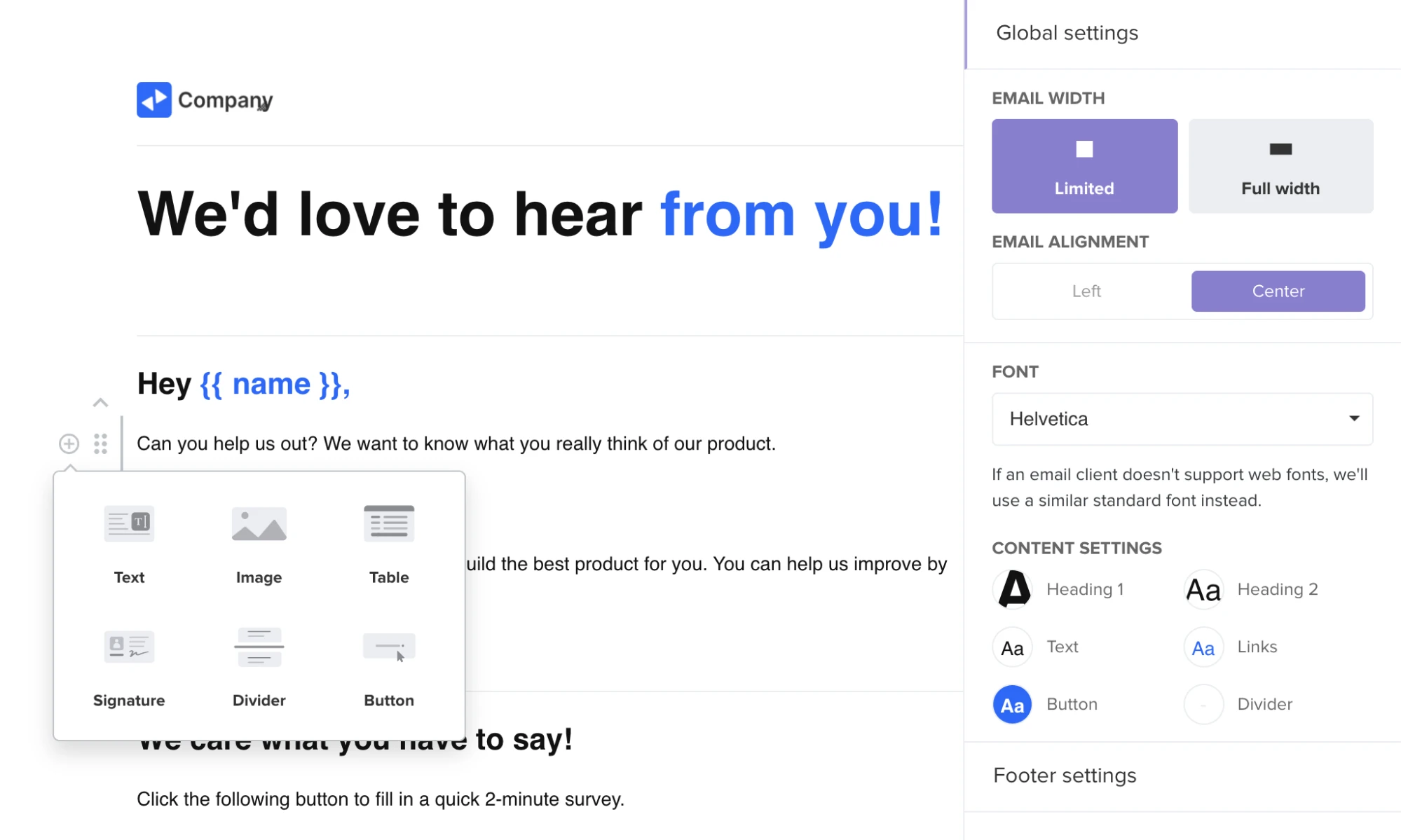
Once the structure of the template is in place, you can easily change the text color, size and alignment. Or apply text formatting like italics, underline and numbered lists when you need it, knowing that what you see is an almost identical preview of what your recipients will see.

Design custom templates
You can involve your entire team in designing custom email templates. Designers and marketers can use the intuitively-designed rich-text editor to create templates from scratch, tweaking the final design so that it looks good in email clients like Gmail and Microsoft Outlook:
Pick from a fixed width or a full width design that comfortably resizes to fit the reader's screen width.

Define each element’s global style so that changes to headings, text, hyperlinks, buttons and dividers are automatically reflected in the email’s design. Like other email templates in MailerSend, you can even automatically fallback to a plain text version if you wish.

Drop in and edit the HTML code of your templates using the toolbar option. Fine-tune the underlying code of your rich-text emails until it’s just right.

Use the most essential content blocks
While text is the main element of your rich-text emails, you can supplement it with a supporting cast of content blocks. Style your main text then highlight sections of your email with the most essential blocks at your fingertips like text, images, tables, buttons, dividers, and email signatures.
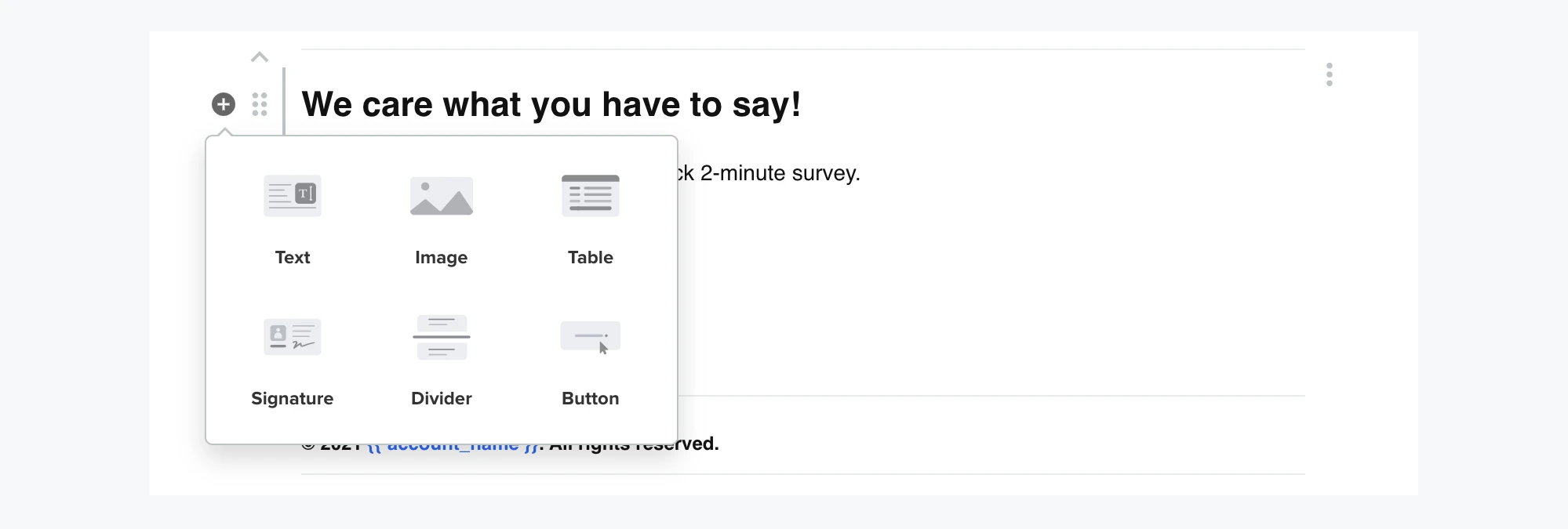
Image blocks will provide visual appeal for your email, while dividers will help add structure. Finish off with a strong signature block that features your name, contact details and a logo or profile photo. Rest assured that MailerSend will ensure that your images will look good on any device!
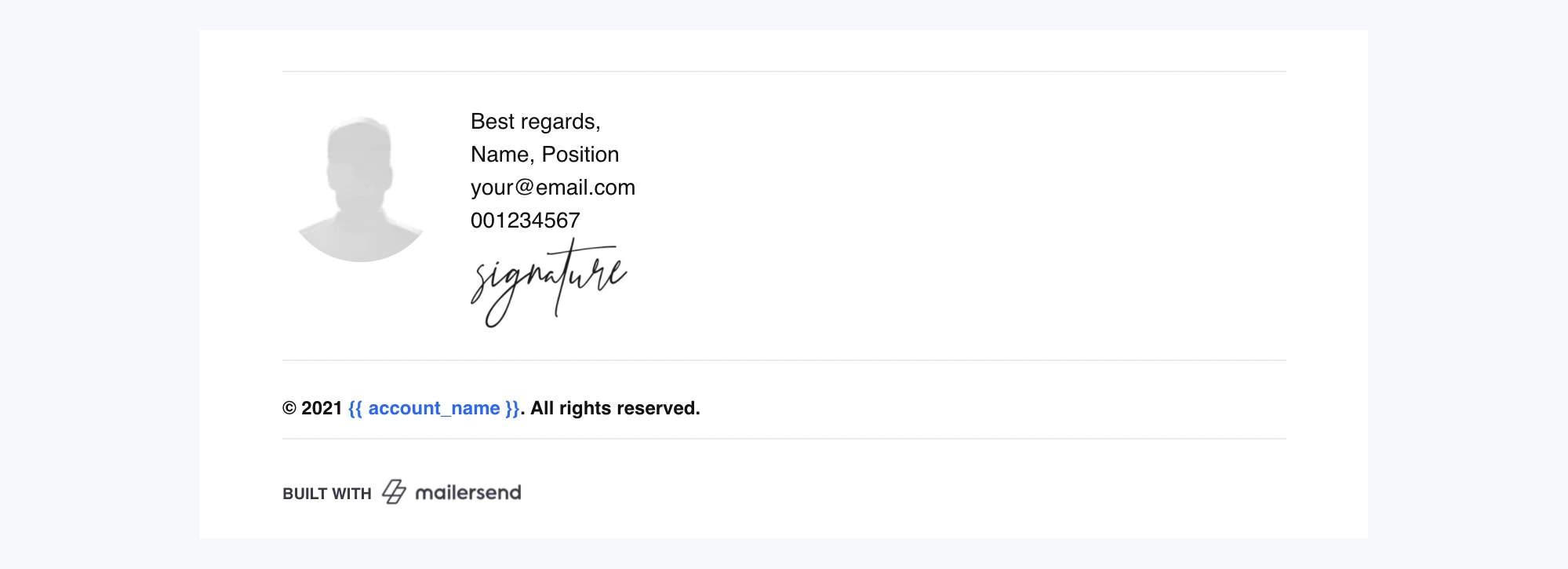
Since only the most essential content blocks are provided, these elements are made up of lightweight and efficient code. And less code means smaller emails that load faster and give a speedy user experience on email clients, whether on smartwatch or desktop computer.
Start quickly with pre-built templates
If you want to send emails quickly, you can get started with pre-built transactional email templates. Choose from a growing library of professionally-designed templates for invoices, password resets and many more. Then customize the template’s images, colors and logo to match your brand.
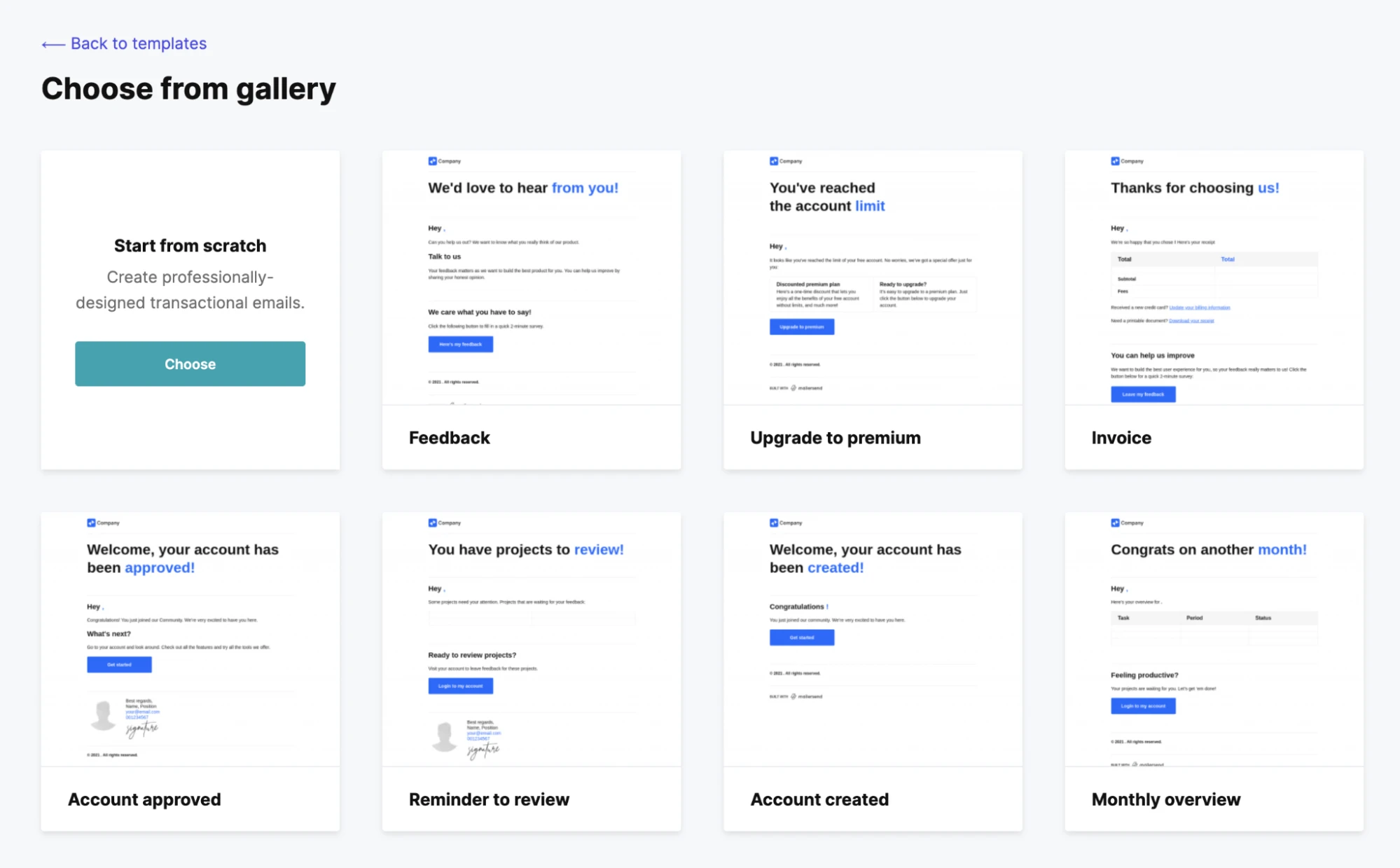
Personalize emails with custom fields
Whether you’re sending one hundred emails or one million emails, you can make each email message feel like it was written just for the individual recipient. Add a personal touch to rich-text emails by using variables like the recipient’s name, their recent purchases, or even their location.
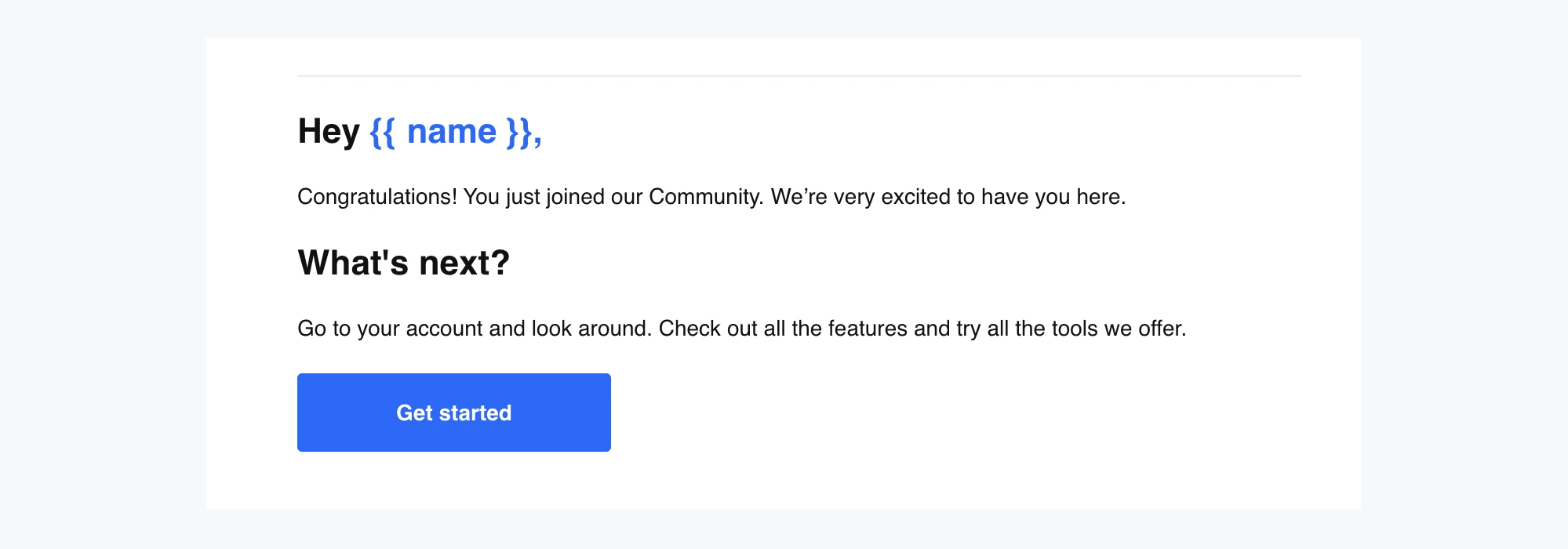
More ways to work faster and smarter
1. Review changes with version tracking
When multiple team members are working on the same email template, it can be hard to keep track of what changes were made and when. With the version tracking functionality, you can enjoy the flexibility of reviewing recent changes to the template, or locating and restoring earlier designs.

2. Save work in progress any time
Working on a new version of an email template can be tricky when the existing template is still active and being sent to your recipients. Using the drop-down menu option, you can save your work as a draft while you perfect the design. Then publish the draft when your design is ready.

3. Manage templates in one place
Once you’ve created rich-text email templates for your use cases, organize them into useful categories like onboarding, notifications, and more. Reuse favorites by duplicating them, then configure default settings like subject, sender and email address for easy, automatic sending.
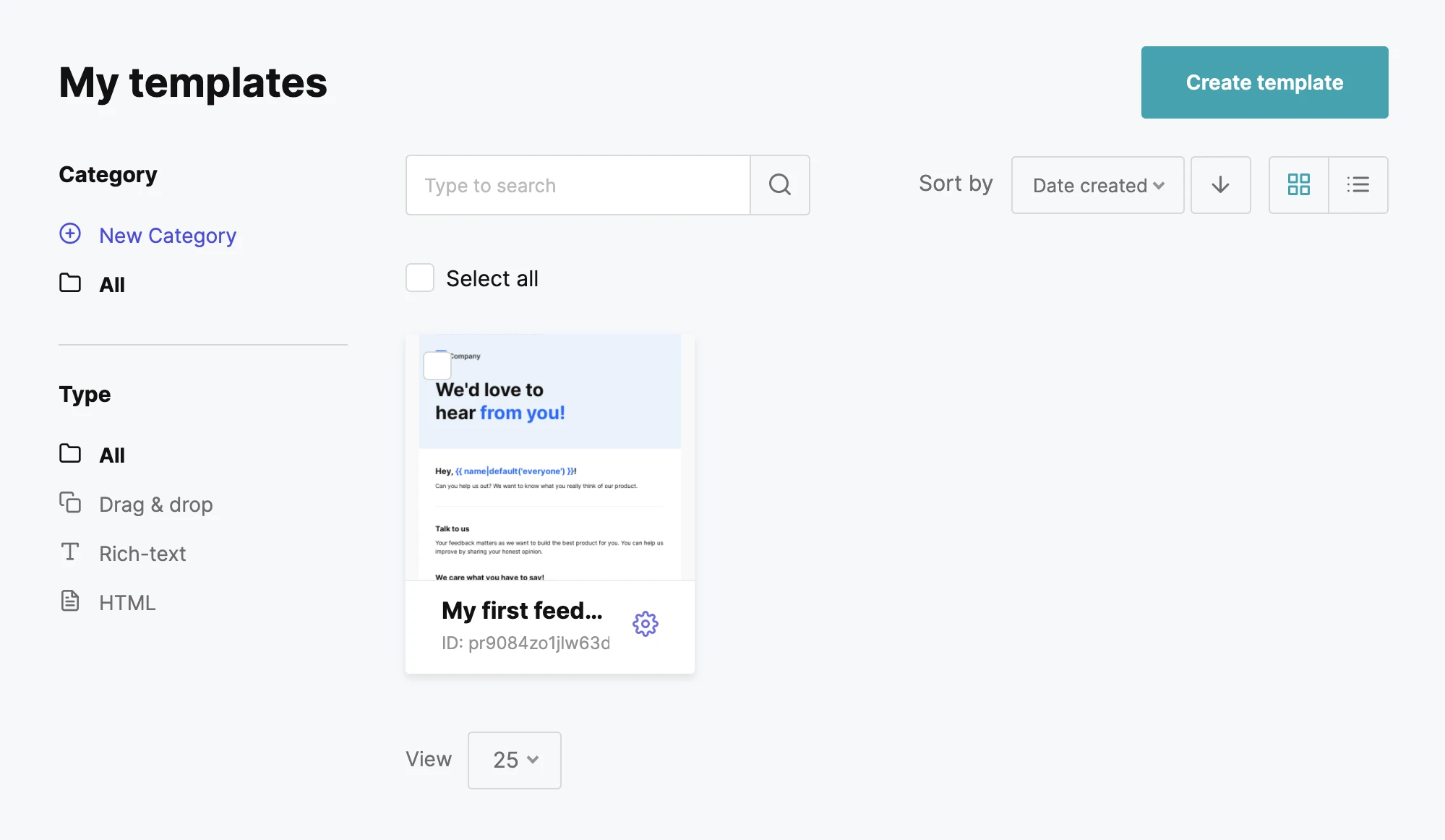
Give the rich-text email editor a try!
You can now design email templates using the most essential features at hand, while enjoying the flexibility of adding advanced features like personalization or content blocks like tables. Give it a try and your recipients may find that your emails are not too heavy, not too light, but just right!
Which editor are you likely to choose to create your email templates next: drag & drop, HTML or rich-text? Share in the comments below.
